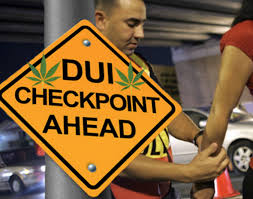So pleased to have Susan Salluce as a guest on DyingWords. Susan is a thanatologist, or grief counsellor, and author of the best selling novel Out Of Breath.
 After a loss, individuals can find comfort in creative expressions of grief: creating a memory stone for the garden or yard; planting a tree in memory of the deceased; incorporating ashes into a piece of jewellery; writing poetry, and song.
After a loss, individuals can find comfort in creative expressions of grief: creating a memory stone for the garden or yard; planting a tree in memory of the deceased; incorporating ashes into a piece of jewellery; writing poetry, and song.
In the past decade, another creative expression of grief has grown exponentially: Memorial Tattoos
 Tattoo artists in the United States observe that a large majority of those coming in for tattoos are doing so to honor the death of a loved one, a pet, the end of a relationship, to honor a fallen soldier, or commemorate a tragedy, such as the loss of lives in the terror attack on the World Trade Center.
Tattoo artists in the United States observe that a large majority of those coming in for tattoos are doing so to honor the death of a loved one, a pet, the end of a relationship, to honor a fallen soldier, or commemorate a tragedy, such as the loss of lives in the terror attack on the World Trade Center.
As a grief specialist, I have long been at dis-ease with grief theories that stress stages, closure, and the need to “move forward” after a loss. As someone who has witnessed and shared in a great deal of loss, I’m drawn to theories that understand grief as a change, not end, in a relationship, and that recognize an enduring connection with our loved ones who have died.
As I held this belief and observed a number of powerful memorial tattoos in friends and clients, it got me thinking.
 What if the boom of memorial tattoos is an outward expression of an inner process—a language of grief—that gives voice to loss, continued connection, and the undying attachment to those in our life who have died?
What if the boom of memorial tattoos is an outward expression of an inner process—a language of grief—that gives voice to loss, continued connection, and the undying attachment to those in our life who have died?
This language allows people to tell their grief stories, share the enduring bond that continues well after death, and offer comfort to the living.
After combing through professional papers and articles online about memorial tattoos, I felt inspired to write Griefink, a non-fiction book about the inner experience and outer expression to grief through tattoo.
 Through social media, friends, support groups, and professionals in the field of psychology, I put out the word about this project last spring. With my wonderful photographer, Matt Molinari, we interviewed and photographed over thirty individuals.
Through social media, friends, support groups, and professionals in the field of psychology, I put out the word about this project last spring. With my wonderful photographer, Matt Molinari, we interviewed and photographed over thirty individuals.
They invited us into their homes, their lives, and into their deepest pain. The loss of a child from leukemia; a son’s suicide; a young woman who had a heart attack; a surfer who drowned are just a few of the stories expressed through memorial tattoo and shared in Griefink.
 With no expectations, I listened to each individual and learned more about grief, continued connection, and the relationship with lost loved ones than any book had taught me. Each person offered emotional, and often, beautiful descriptions of loss. They outlined the decision to get the memorial tattoo, how they found a tattoo artist, the way in which the tattoo was designed, and the process afterward. They confirmed that their tattoos leave the door open for people to ask about their loss; that the ink invites conversation, bringing the deceased into the living world.
With no expectations, I listened to each individual and learned more about grief, continued connection, and the relationship with lost loved ones than any book had taught me. Each person offered emotional, and often, beautiful descriptions of loss. They outlined the decision to get the memorial tattoo, how they found a tattoo artist, the way in which the tattoo was designed, and the process afterward. They confirmed that their tattoos leave the door open for people to ask about their loss; that the ink invites conversation, bringing the deceased into the living world.
Although all of these individuals feel a part of my life because of their vulnerability and transparency, a few left me breathless. One such story is Mia and Cade. Siblings only two years apart, Mia was a second mother to her brother Cade, who had autistic tendencies and received special education.
 “We went everywhere together. Cade taught you to not judge. He was an awesome, bright, and happy kid who taught you to love life,” Cade’s sister, Mia, said. “He loved to give people high fives and hugs.” Cade experienced a seizure in March of 2014. An MRI revealed a tumor in his skull. In an attempt to remove the tumor, Cade died.
“We went everywhere together. Cade taught you to not judge. He was an awesome, bright, and happy kid who taught you to love life,” Cade’s sister, Mia, said. “He loved to give people high fives and hugs.” Cade experienced a seizure in March of 2014. An MRI revealed a tumor in his skull. In an attempt to remove the tumor, Cade died.
Both Mia and her father, Chris, received a memorial tattoo of Cade’s handprint—Mia’s on her back, and Chris’s on the top of his hand—with Cade’s signature underneath.
Mia shared, “A lot of my friends remember that Cade would ask for a high five when he saw them, so when friends see me now, they high five his hand on my back. That feels good. Knowing I have his handprint with me wherever I go, I know Cade will always be with me.”
 Griefink shows that grief reactions, which are etched in each tattoo, become the foundation for one’s loss narrative. Through tattoo, our bonds with those we have lost are strengthened through the permanency of ink. Additionally, the language of memorial tattoo blows apart the belief that there’s a time limit to mourning, thereby alleviating the notion that one must “get over” his or her loss. Through the tattoo, the invitation is open to continue talking about our loved one, the meaning that he or she had in our life, and how this individual continues to impact us.
Griefink shows that grief reactions, which are etched in each tattoo, become the foundation for one’s loss narrative. Through tattoo, our bonds with those we have lost are strengthened through the permanency of ink. Additionally, the language of memorial tattoo blows apart the belief that there’s a time limit to mourning, thereby alleviating the notion that one must “get over” his or her loss. Through the tattoo, the invitation is open to continue talking about our loved one, the meaning that he or she had in our life, and how this individual continues to impact us.

 Susan Salluce
Susan Salluce














